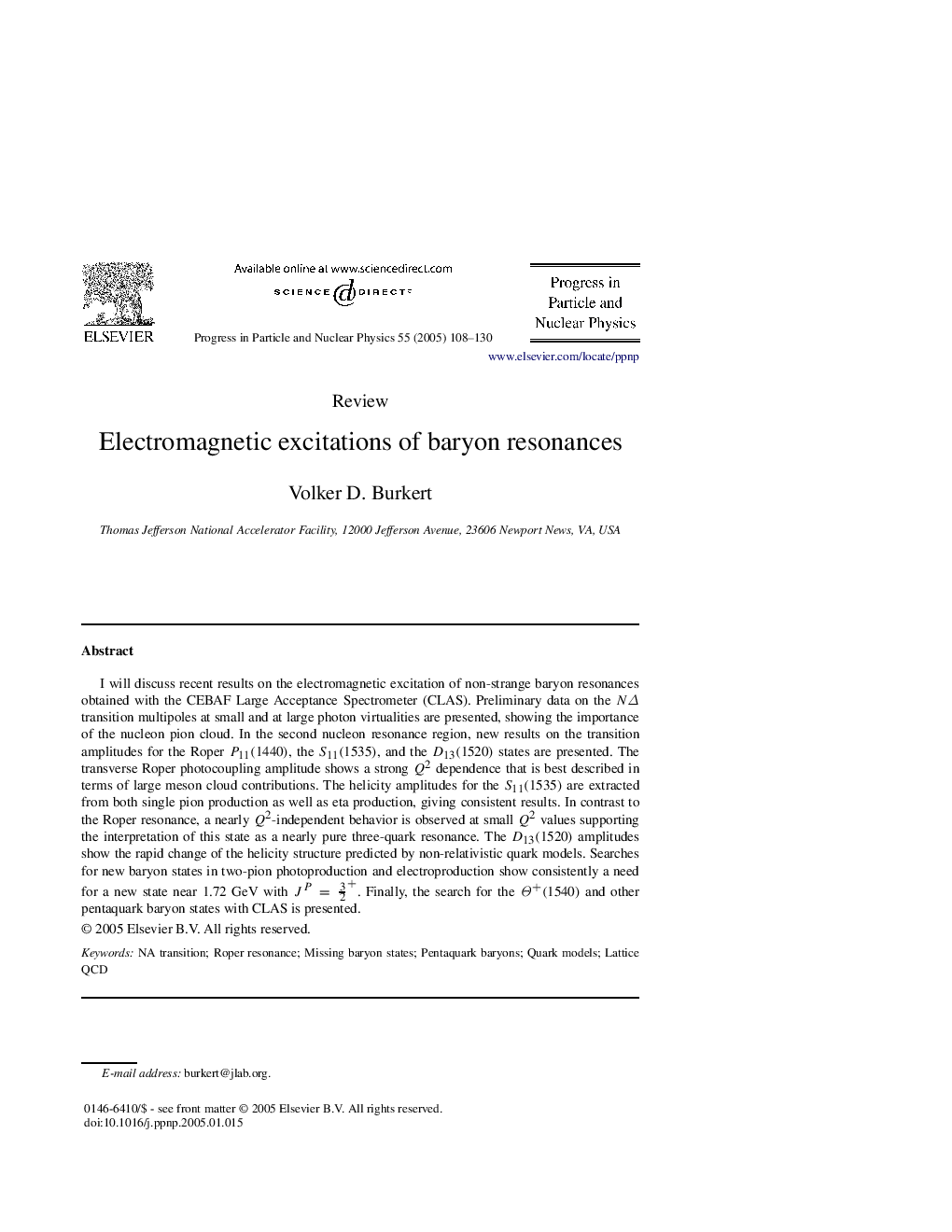| Article ID | Journal | Published Year | Pages | File Type |
|---|---|---|---|---|
| 10726427 | Progress in Particle and Nuclear Physics | 2005 | 23 Pages |
Abstract
I will discuss recent results on the electromagnetic excitation of non-strange baryon resonances obtained with the CEBAF Large Acceptance Spectrometer (CLAS). Preliminary data on the NÎ transition multipoles at small and at large photon virtualities are presented, showing the importance of the nucleon pion cloud. In the second nucleon resonance region, new results on the transition amplitudes for the Roper P11(1440), the S11(1535), and the D13(1520) states are presented. The transverse Roper photocoupling amplitude shows a strong Q2 dependence that is best described in terms of large meson cloud contributions. The helicity amplitudes for the S11(1535) are extracted from both single pion production as well as eta production, giving consistent results. In contrast to the Roper resonance, a nearly Q2-independent behavior is observed at small Q2 values supporting the interpretation of this state as a nearly pure three-quark resonance. The D13(1520) amplitudes show the rapid change of the helicity structure predicted by non-relativistic quark models. Searches for new baryon states in two-pion photoproduction and electroproduction show consistently a need for a new state near 1.72Â GeV with JP=32+. Finally, the search for the Î+(1540) and other pentaquark baryon states with CLAS is presented.
Related Topics
Physical Sciences and Engineering
Physics and Astronomy
Nuclear and High Energy Physics
Authors
Volker D. Burkert,
